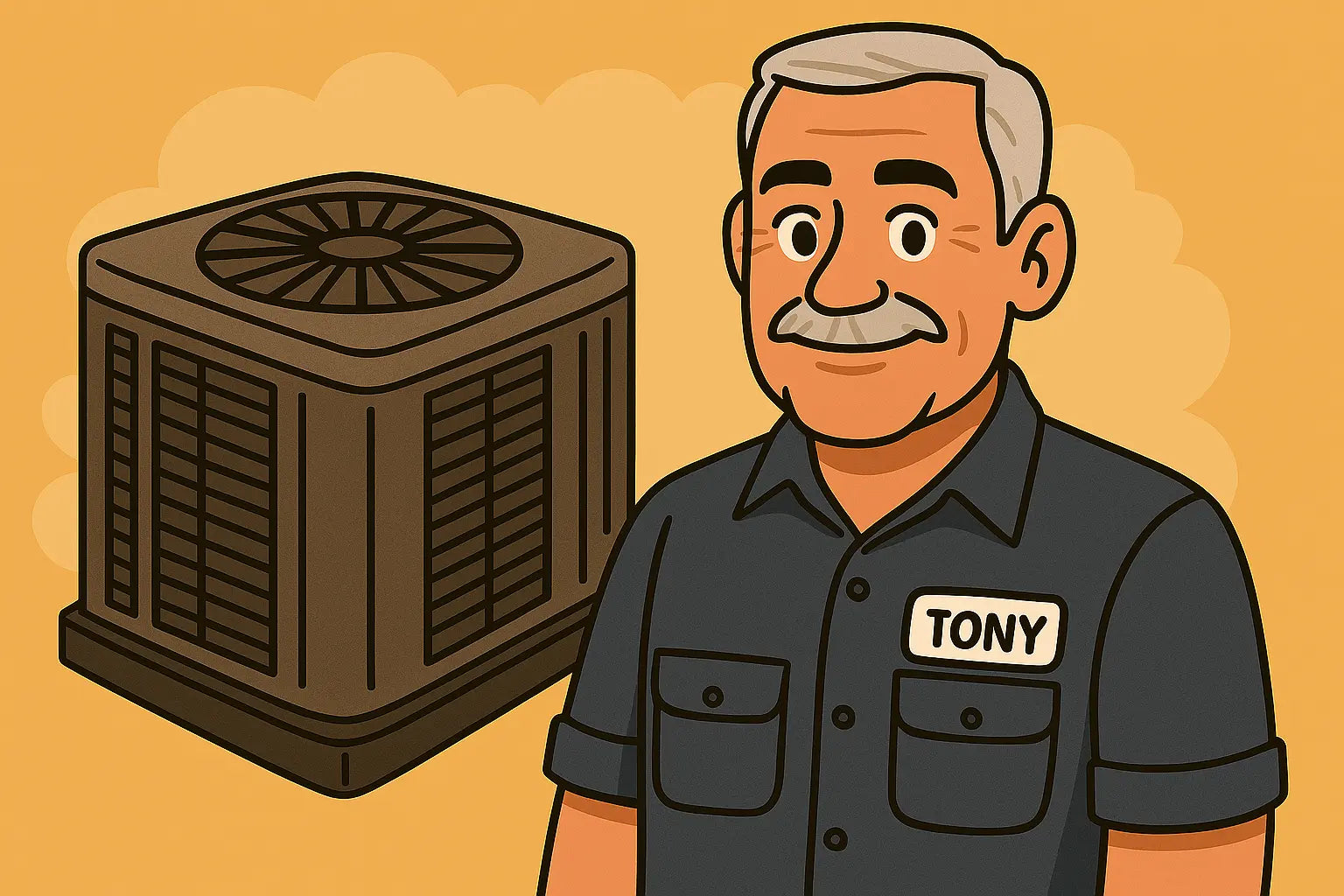Tony’s Intro 🔧
What’s up, HVAC warriors and weekend warriors. I’m Tony—and yeah, I’ve been elbow-deep in more Goodman units than I care to count. Today we’re talkin’ about the Goodman 3 Ton 14.5 SEER2 R-32 System, built around the GLXS4BA3610 condenser and AMST36CU1300 air handler. If you’re gonna install it right—or fix it when it goes sideways—then stick with me. We’ll keep this cool, crisp, and cut through the fluff like a Sawzall through ductboard. Let’s get into it 💪
1. What Makes This System Special
This R-32 system is Goodman’s answer to the modern homeowner’s wish list: better efficiency, lower refrigerant footprint, and compatibility with today’s airflow and zoning setups. It’s a 3-ton split system built for homes in the 1,500 to 2,800 sq ft range, depending on insulation and local climate. It delivers 14.5 SEER2 efficiency, with an ECM motor in the air handler for smooth airflow and energy savings.
Both components come AHRI-matched, which means verified performance when installed together. And with R-32 refrigerant, you’re ahead of the curve on climate compliance and efficiency.
For more on what makes R-32 different (and better), check out Carrier’s breakdown of R-32’s performance advantages.
2. Installation Planning 101
You don’t just plop this thing in and walk away. Here’s what I always double-check before cracking open the box:
-
Local code compliance: Especially for R-32 safety clearances and electric panel load.
-
Manuals: You can’t wing it. Always read the install guide from Goodman and check line-set charts.
-
Pad prep: That condenser needs to sit on a level, vibration-isolated pad with 24" side clearance and 60" overhead.
-
Line set length: The factory charge typically covers up to 15 feet. Anything longer = adjustment.
Don’t forget your vacuum pump, micron gauge, and nitrogen for pressure testing. If you skip any of those? You’re not installing, you’re gambling 🎲
For a top-to-bottom breakdown on HVAC install steps, this HVAC School install guide is gold.
3. Step-by-Step Install Walkthrough
3.1 Set the Outdoor Unit
-
Level that pad.
-
Anchor the unit if local code requires it (think wind zones like coastal FL or Texas).
-
Connect the line set—flare or braze depending on your skill level. Don’t cheap out on fittings.
-
Pull a deep vacuum to 500 microns (yes, really).
3.2 Wire It Up
-
208/230V, single-phase—verify circuit breaker sizing per the data tag.
-
Use a fused disconnect for safety.
-
Inside the handler, wire the blower and electric heat (if you’ve added it).
-
Low-voltage connections for thermostat should follow the Goodman diagram exactly.
Need a visual wiring reference? Goodman’s own install PDF has exactly what you need.
3.3 Air Handler Configuration
-
Make sure your orientation matches the airflow arrows: upflow, downflow, or horizontal.
-
Set blower speed taps to achieve 1,200 CFM (roughly 400 CFM per ton).
-
Check return and supply duct sizing for static pressure. Too much resistance = poor performance.
-
If you’ve added heat strips, check amperage draw and circuit sizing.
4. First Startup Sequence 🚨
This is the moment of truth. Let’s fire it up:
-
Turn on breaker. Thermostat calls for cooling.
-
Check contactor engagement—condenser fan should spin up.
-
Let it run 15–20 minutes, then measure superheat and subcooling.
-
Compare pressures and temps to Goodman’s charge charts. Adjust refrigerant only if your readings are off and airflow is confirmed correct.
Don’t skip airflow verification. Use a manometer or test pressure drop across the coil.
For airflow troubleshooting tips, see Energy Vanguard’s guide to airflow and static pressure.
5. Top Troubleshooting Tips When Things Go Sideways
Even a perfect install can hit bumps. Here are the big ones I’ve fixed more times than I can count:
5.1 System Won’t Start
-
Thermostat not wired right
-
Blown fuse in disconnect
-
Low-voltage transformer fried from shorted wire
-
Float switch tripped from clogged drain
5.2 Poor Cooling
-
Wrong blower speed selected
-
Dirty filter or coil
-
Low charge from installer error
-
Reversing valve stuck (in heat pump configs)
For a solid checklist, I like this AC troubleshooting guide from Trane.
5.3 Freezing Coils
-
Low refrigerant
-
Weak blower motor
-
Bad TXV
-
Oversized system with short cycles
5.4 Condensate Leaks
-
Pan overflow from clogged line
-
No trap on condensate line (yes, you need one)
-
Secondary drain not connected or capped
6. Maintenance Tips to Keep It Running for the Long Haul
-
Change filters every 90 days (or 30 if pets)
-
Clear brush and debris from condenser coil annually
-
Flush condensate line with vinegar or enzyme tablets
-
Monitor refrigerant pressures yearly—low charge = lost efficiency
Tony’s Outro 😎
Alright, champ—if you made it this far, you’re officially in the know. Whether you're DIY’ing your install or just want to make sure your tech isn't wingin' it, you've now got the tools to install, troubleshoot, and maintain the Goodman GLXS4BA3610 and AMST36CU1300 system like a seasoned pro.
This 3-ton R-32 split system is built to work hard and save energy—as long as it’s installed and set up right. Don’t skip the airflow checks. Don’t guess on the charge. And for the love of compressors, don’t forget to register your warranty.
If you’re still shopping for the unit or want to double-check what’s included, take a look at this full system bundle on The Furnace Outlet. It’s a solid combo—backed by Goodman, loaded with R-32, and built for comfort.
Need more advanced installation tips? Visit: How to Install the Goodman GLXS4BA3610 + AMST36CU1300 System.
Alright, time for me to hit the road. You’ve got this. And if your condenser starts sounding like a diesel truck at 3 a.m.—well, you know who to call 😉
Stay cool. Stay smart. And keep your multimeter close.
–Tony 🧰🌀







